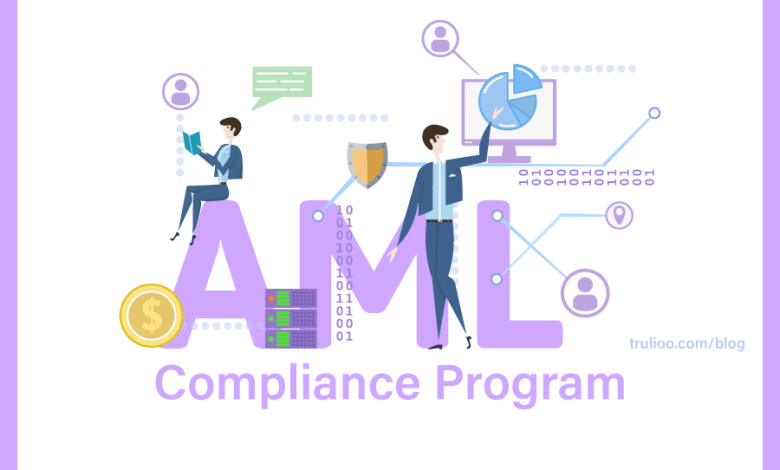More About AML Compliance Program?

Anti-Money Laundering (AML) Policy Creation and Implementation Compliance Programs is a requirement for all banks, credit unions, and other financial institutions across the globe to fight financial crime. To prevent and identify money laundering and terrorist funding, financial institutions implement an AML program. The United States Bank Secrecy Act (BSA) has been amended by various subsequent legislation (including the USA Patriot Act). At the same time, the EU introduced its Fourth Anti-Money Laundering Directive in 2017 and its Fifth Anti-Money Laundering Directive in 2020. AML compliance programs are an ongoing process.
As a result, all financial institutions should have a clear grasp of what an AML compliance program must accomplish and how to implement a schedule that works for them.
AML Compliance Programs should be able to answer these questions:
To put it into effect, an AML compliance program should make it possible for a financial institution to identify and report any suspicious actions related to money laundering to the competent authorities. As part of an institution’s anti-money laundering (AML) compliance program, it is essential to consider the risk presented by its customers and clients.
A successful Anti-Money Laundering (AML) program must be founded on solid regulatory knowledge and managed by experienced and qualified employees.
Creating an AML Compliance Program: What You Need to Know
When putting out an AML compliance program, it is up to senior management to develop a set of guidelines and processes that are specific to their company’s requirements. While planning your schedule, there are many variables to consider, but they should be based on core criteria.
The AML Compliance Program’s Security Risks
Building an efficient AML compliance program begins with conducting a thorough risk assessment, an essential first step. A risk-based strategy for AML should include the goods and services you provide, your customers and clients, and your geographic location. No two institutions face the same collection of anti-money laundering (AML) risks.
As a best practice, your AML compliance program should minimise both the administrative hassles of over-compliance and the possible legal risks of under-compliance. One-size-fits-all solutions do not exist for the inherent problems of the economic environment; each institution is required to design a solution tailored to its risk profile.
Internal checks and balances
The institution’s internal controls and reporting systems should be the centrepiece of an AML compliance program. The program’s controls should be evaluated regularly to see how well they’re working to fulfil compliance criteria.
For an institution’s internal controls to be adequate, all of the institution’s staff members must be well-versed in their roles and duties within the system and the rules and processes that assure continuing compliance.
AML Compliance Programs Include Independent Audits
Third-party testing and auditing should be a component of any successful AML compliance program. It is recommended that independent testing be required every 12-18 months. However, institutions operating in high-risk regions may want to adopt a more regular testing schedule. A certified third-party firm must test the AML compliance program to undertake a risk-based audit tailored to your company. This audit may be performed by an internal team not part of AML or Compliance at significant institutions.
Final Thoughts
A strong compliance culture and an effective risk-based AML program must be in place to avoid penalties and damages. A broader spectrum of financial institutions and people is being evaluated in Australia. As a result, companies doing business in international marketplaces must beef up their anti-money laundering systems due to the many regulatory regimes in use.





